Cabinet 07: Coloured Initials, Rubrication & Recycling
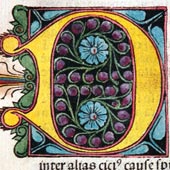
Colour-daubed Initials
"The initial in more than one color is uncommon in all of printing history", so writes Alexander Nesbitt in Decorative Alphabets and Initials (1959). Early printed initials made from woodcuts were hand-coloured with mixed results, depending on the skill and care taken by the colourist. Presumably for economic reasons, this practice was short lived. Formularium aduocatoru[m] is a good example of a printed initial that has been, as Nesbitt describes the practice, "daubed over with color".
Formularium aduocatoru[m] et p[ro]curatorum Romane curie et Regij Parleamenti : practica[m] [secunda]m iura co[m]munia clarrissime ostendans ... Imp[re]ssum Basilee ... : [s.n.], 1493. Shoults Swb 1493 F
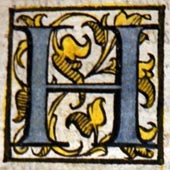
Girolamo Francini's Stationi delle chiese has also had colour applied after the initials and illustrations were printed. The identity and motivation of the colourist is unknown.
Girolamo Francini, Stationi delle chiese di Roma per tutta la quaresima: con una breve narratione della fondatione, & consecratione di dette chiese, et delle reliquie che in quello sono, con la vita di tutti Santi, & Sante. In Venetia : Per Girolamo Francino ..., 1588. DeBeer Itb 1588 S
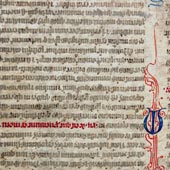
Recycled Covers
Decorative manuscript initials are eye-catching wherever they are found but perhaps more so when they are seen in unexpected places. The two items on display have been covered with manuscript pages inscribed with decorative initials. The fine flourishes of the Hieronymi Freyeri initials contrast with the bold lettering of the Ieremiae prophetae.
Both are evidence of the long standing tradition of recycling.
Jerome Freyer, Hieronymi Freyeri. Fasciculus poematvm graecorum ex antiquis ac recentioribus poetis collectus et ad innoxium scholasticae juventutis usum accommodatus. Halae Magdeburgicae, Orphanotrophei, 1715. Shoults Gb 1715 F
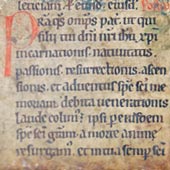
Jacob Latomus, Ieremiae prophetae Threni carmine redditi una cum canticis Biblici & nonnullis aliis sacre Scripturae locis. Antverpiae : Ex officina Christophori Plantini ..., 1587. Shoults Lb 1587 B
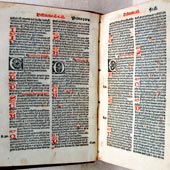
Rubricated Printed Texts
Rubrication is the process of adding red lettering and details to texts. Early printers used the manuscript process whereby a rubricator would add their contributions after the text was produced. As printing techniques and technology developed, printers took over the rubrication process. Printers used red ink to imitate manuscript rubrication. Befitting the manuscript tradition, religious texts including books on canon law, like the one on display, were typically rubricated. Presumably due to the expense and time required to produce printed rubricated texts, rubrication eventually ceased to be a general practice and became a technique reserved for selected productions. It can still be found in use today in some private press productions.

